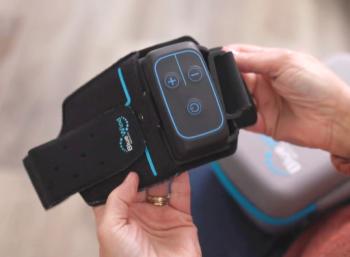
How to use scribes to get off the computer and in front of patients
Electronic health records (EHR) have the ability to transform the current healthcare system into a place of efficiently executed, high-quality, and patient-centered medicine, but only if physicians know how to use these systems to their maximum potential.
Related:
Under the Health Information Technology for Economic and Clinical Health (HITECH) Act of 2009, eligible physicians received thousands of dollars in financial incentives to purchase and implement EHR in their practices via the “Meaningful Use” program. Compared to paper charts, EHR promotes quality healthcare by improving provider-to-provider communication, increasing patient access to their medical information, endorsing patient safety, enhancing medical information security, and promoting transparent provider-patient relationships.
Physicians who have embraced EHR are struggling to effectively integrate the system into their practices because they must now divide their time between the patient and the computer. Unless used properly, EHR can negatively impact the patient encounter by reducing both verbal and nonverbal communication between physicians and patients. Good verbal communication allows a physician to gather a full history on a patient and to extract pertinent information about a chief complaint.
Nonverbal communication, such as eye contact and body positioning, may be even more important than verbal communication during patient encounters. A 2015 study published in Patient Education and Counseling indicates the quality of nonverbal communication has been directly linked to the patient’s level of comfort, degree of engagement and overall satisfaction during a healthcare encounter. This, in turn, significantly impacts a patient’s honesty with the physician and adherence to a treatment plan, according to follow-up studies.
Further reading:
Research from 2014 published in the International Journal of Medical Informatics found physicians who use a technology-centered approach have the longest patient encounter times, but they also have the lowest patient satisfaction scores. This is because they spend the least amount of time gazing directly at their patients. Patient satisfaction does not depend on whether physicians use verbal or non-verbal cues (such as nodding their head) to show patients they are listening.
Rather, patient satisfaction and patient engagement depend on the patient’s ability to engage in direct eye contact with the physician and screen share with the physician when he or she turns his or her attention towards the computer. Unfortunately, most physicians do not do this. The average physician spends 30% to 50% of a patient encounter looking directly at the EHR, with the majority of that time spent typing in an office layout that does not allow the patient to remain engaged by screen sharing, according to 2013 research from the Journal of General Practice.
EHR decreases
Related:
Motion Sports MD is an innovative primary care office in Murrieta, California, that incorporates scribes with its EHR to maximize profit and increase patient satisfaction. Dr. Jerry Hizon, the physician-owner of Motion Sports MD, designed the office on the theory that “the key to a good EHR is the minimal touching of keys.” The office utilizes four scribes, each of whom underwent a minimum of 60 hours of supervised training where they learned medical terminology, basic medical questions to ask a patient, and how to take reliable notes in any routine outpatient healthcare scenario.
At this office, the duty of the scribe is to update the medical records of the patient since his or her last encounter and determine the purpose for the patient’s visit. Once this information is presented to the physician, the scribe transcribes the physician-patient encounter through a combination of free typing and completion of pre-made templets. The scribe also documents all procedures performed in the office, new imaging and/or laboratory results, and any notes from outside physicians. After the patient leaves, the physician quickly reviews the scribe’s notes and uses voice dictation to make changes and place orders. The physician then either signs the note verbally or with minimal keystrokes to close the encounter.
By using scribes, the physician does not need to type or even look at a computer screen during an encounter unless reviewing recent laboratory results or imaging, or educating a patient. Even in these instances, a second computer is present in each room and is connected to the internet with pre-bookmarked websites to allow for quick viewing of patient imaging and brief videos to educate patients on different diseases, injuries, and important preventative medicine topics.
The room is designed so that patients can watch these educational videos on a mounted computer monitor while the physician is performing the ritual of the physical exam. This decreases the amount of time spent in silence, helps distract the patients so they are more relaxed, and gives patients a better understanding of their disease process. The remainder of the physician-patient dialogue is spent clarifying information for the patient and discussing the next step in diagnosis or treatment.
Hot topic:
Dr. Hizon conducted a study to determine how effective his implementation of EHR was in improving patient satisfaction and office efficiency. He found he was able to see an average of 35 patients in a day while maintaining an average patient satisfaction rating of 4.9/5.0. The use of scribes allowed him to spend 93.7% of each patient encounter directly interacting with the patient.
Over a one-month period, 100 patients from Motion Sports MD were randomly asked to participate in an observational study before their visit. The group consisted of 58 men and 42 women. No other demographic information was collected. All visits were recorded with a high-resolution video camera positioned on a tripod in the corner of the room to maximize the view of the physician-patient encounter.
The videos were later reviewed by a trained research assistant who recorded the times for each measured gaze behavior across the total visit length. The total visit length was defined as the total amount of time both the physician and patient were in the room excluding the physical exam. The physical exam was excluded from the total visit length due to it being a time of minimal communication and direct eye contact as the physician is focusing on examining different aspects of the patient’s body.
Popular online:
The gaze behaviors were measured in minutes. These included the amount of time the physician and patient had direct eye contact (direct gaze), the amount of time the physician and patient were both looking at the computer screen (screen sharing), and the amount of time the physician and patient were looking elsewhere (no gaze). Finally, descriptive statistics were reported for each gaze behavior coded using SPSS software.
The average total visit length was 8.31 ± 3.94 minutes across the 100 patient encounters. Direct gaze occurred for an average of 6.72 ± 3.29 minutes during a patient encounter, which translated into 81.8% of the total visit length. The physician and patient spent an additional 1.13 ± 1.29 minutes of the patient encounter screen sharing (11.88% of the visit). The physician only spent an average of 6.31% of the total visit length gazing elsewhere (0.47 ± 0.54 minutes).
Popular online:
This study illustrates the power of the EHR system when combined with the use of scribes. Having an effective EHR design allows physicians to get off of the computer and to have more meaningful encounters with their patients. Yet, many physicians are struggling with how to use EHR and maintain patient satisfaction. Formal education on ways to implement EHR and other technology into a medical practice can prevent the trial and error process the EHR system has become for many physicians.
Standardized training for scribes can also help physicians transition more easily to an EHR system and spend more of their time focusing on patients. When a scribe has a thorough understanding of how to operate the EHR system and what to expect during a patient encounter, then he or she can be more easily relied upon to do the majority of the physician’s charting. This results in a medical practice that is more profitable, more efficient, and that has a higher patient satisfaction.
Newsletter
Stay informed and empowered with Medical Economics enewsletter, delivering expert insights, financial strategies, practice management tips and technology trends — tailored for today’s physicians.














